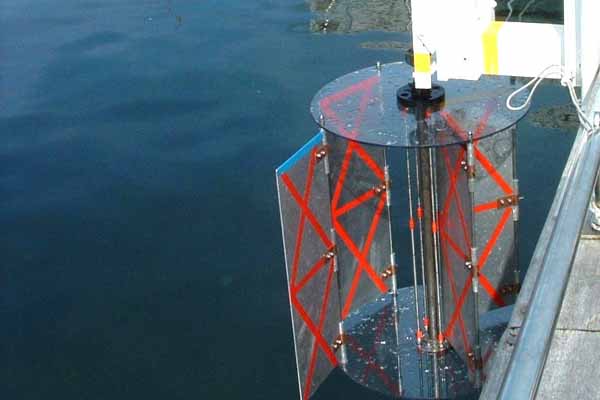Kingston University is putting a prototype hydroelectric turbine on the Thames from a pontoon. The goal of Hales Marine Energy, based near Eastbourne, is to develop a turbine that can be utilised both at sea and in rivers, with the turbine mounted on a submersible tank that ordinarily lays on the seabed but can be brought to the surface for assistance. The Thames prototype is 1m in diameter and produces 1kW, while the 5m offshore turbines are expected to produce roughly 20kW.
“It’s based on the traditional water wheel, but mounted on a vertical axis,” said designer Paul Hales. “Using modern engineering and materials, it is possible to submerge the entire turbine in the tidal flow.” The blades on the non-drive side are shaped and hinged to provide minimum drag.
“The large blade area on the drive side produces very high torque at low speed, in the 10-20 rpm range,” Hales said. “Coupled with advanced permanent magnet generators that can start producing electricity at as little as 2 revolutions per minute, my turbine could offer the possibility of tidal generation around the world.”
The Oxfordshire-based sensor technology grabbed the attention for this project since its ‘TorqSense‘ wireless torque sensor is employed on the prototype. Rod Bromfield, a Kingston University engineer, is in charge of the Thames installation. According to Sensor Technology, “one of the engineering challenges Rod faced was the rather sluggish spinning of the turbine, in this test below 50 rpm.”
“Not only did this influence the selection of TorqSense, but it is also a major aspect of the Hales turbine: low speed equals less stress on moving parts and thus less service.” It also lessens habitat disruption.” The turbine is located near Richmond Bridge and can power the pontoon’s lights.















